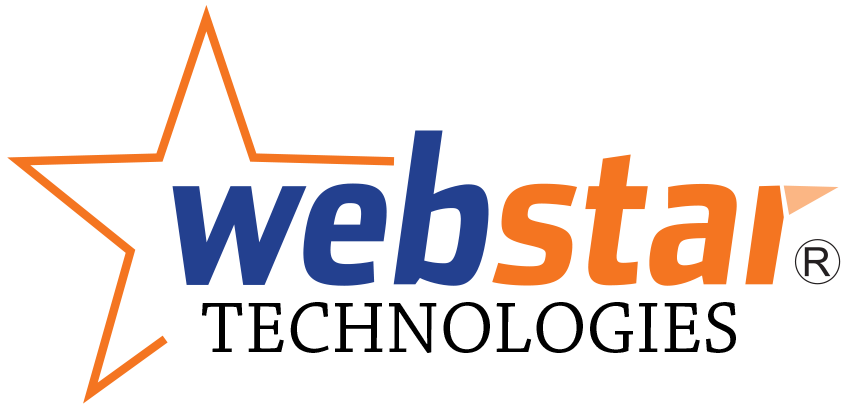At Webstar Uganda, having a website up and running is just the beginning. To operate efficiently, stay safe, and function at its best, it requires ongoing management and maintenance. Below is a detailed outline of what effective website management after launch involves:
To help you navigate the rough waters following your launch, we’ll guide you through the process of creating a website management plan for both the short-term (immediately after your launch) and the long-term growth stages of your site.
Components of Website Management in Uganda.

1. Clean Up Any Post-Launch Tasks
Your website is live, now what? Launching takes energy and effort. There are many people who spend a significant amount of time and energy, yet never reach the point of having a live website.
In an ideal world, the following tasks would have been completed before your launch. If not, please complete them as soon as possible.
- Check Website Loading Speed: Maintaining a fast-loading site is a good website management habit, as it enhances the overall user experience and helps you rank higher in search engines. Use tools like GTMetrix or Google PageSpeed Insights to assess your site’s current performance. Conduct regular checks to ensure your performance doesn’t slip over time.
- Resize All Images: Duplicate images and large images in your media library can significantly impact your website’s speed and Search Engine Results Page (SERP) rankings. Do a site run-through to ensure every image you’re using is the one you intended. To further enhance site speed, consider using a tool like Image Optimizer to compress your images before uploading them.
- Do a Content Run-Through: Your content may still contain errors that can confuse your visitors. Website management necessitates checking all of your content for spelling errors and misused words, ensuring your content is optimized correctly for search engines, and making sure that everything is properly formatted. It’s helpful to have another team member or an outside professional review your site for you. Often, a fresh pair of eyes can catch things that are easily overlooked.
- Check for responsiveness on all screens: Do you know what your site looks like across multiple devices? Check for stability and responsiveness on different devices; it needs to look and perform properly across a multitude of screen sizes.
- Go Through Forms, Sign-Up Pathways, and Update links: Chances are, you’ll have multiple engagement pathways across your site. This includes elements such as email sign-up forms, contact forms, buttons, navigation links, and any other components that require visitor input to function. Also, be sure to check your site for the dreaded 404 page. Take the time to click through every active link on your website to ensure it links to the intended page. With the help of plugins like Yoast, you can check and substitute redirects and check for Not Found pages in Google Search Console.
- Create and Submit Your XML Sitemap in Google Search Console. Your XML sitemap helps the Google web crawlers more easily determine the structure of your website. This file will list all of the relevant URLs that you want to rank in Google. This is a crucial aspect of maintaining and improving your onsite SEO.
2. Create and Execute Marketing Strategies
Websites or Web Apps succeed by increasing their traffic and customers. Launching can be a big splash, but sustaining the momentum is crucial. Online marketing methods are numerous, and we will provide you with some options to choose from. When choosing the best marketing method for your business, it’s essential to start with the central question: Where does my target audience spend their time? By answering this, you’ll be able to develop a plan on how to reach them best using the methods below.
- Social Media. Social media is usually used to build a community of followers, and you can then direct back to your website or use it as social proof to increase conversions. Large social media followings take time to build, but can be a potent source of influence.
- Content Marketing. Essentially, content marketing is providing value to your readers via both onsite and offsite content. You can achieve this through various formats, including blogs, e-books, special reports, and guest blogs.
- Email Marketing. Email marketing is the method of collecting visitors’ email addresses, allowing you to provide value and later sell them on your services. This is typically used in conjunction with content marketing and other marketing methods, such as PPC.
- Pay Per Click. Pay-per-click is a method of setting up ads on various platforms, such as Google AdWords, and then directing traffic to your website or landing page. To take this route of advertising, it is first important to ensure your website is optimized to maximize the traffic you are getting.
3. Software, Plugin, and Theme Updates.
-
Ensure that your CMS (e.g., WordPress, Joomla) is up-to-date for optimal security and performance, as outdated software can lead to security breaches that damage the website’s reputation on search engines.
-
Updating plugins and themes used during the web design and development process to prevent vulnerabilities and compatibility issues. Although these issues may not be seen as very immediate threats, outdated plugins, among other things, affect the website functionality and performance, eventually affecting the website ranking on Google, Bing, etc.
-
Test updates in a staging environment: It’s always professional behavior to back up the website and database before making updates and implementing changes. For example, viewing and saving changes as a draft before publishing them live.
4. Regular Content Updates
-
Regularly add new blog posts, news, or product updates to keep the site fresh. These updates keep the website on top with recently updated content. Update existing web pages to enhance relevance and improve SEO performance. Additionally, refresh images, testimonials, and calls-to-action to maintain engagement. Include promos and more user-engaging content.
5. User Experience (UX) Improvements
-
We gather feedback through surveys, polls, or live chat from clients, team, and customers to determine which interface options best suit our clients’ target audience. Webstar Simplifies navigation depending on user behavior and feedback. As a result, we please customers, which in turn increases traffic. We also ensure to meet mobile responsiveness and accessibility standards.
6. Hosting and Domain Management
-
Monitor hosting resource usage (bandwidth, storage) to prevent running out of space and coverage. Webstar keeps your website hosting and domain expiry dates in mind to prevent clients from losing their domains. Renew domains and SSL certificates on time.
-
Upgrade hosting plans as traffic and content grow. Adjusting hosting plans becomes necessary, especially in cases of traffic growth and increased content updates, which correspondingly require more resources, such as storage and professional email services.
7. SEO Monitoring and Adjustments
-
At Webstar Technologies, we track both keyword rankings and organic traffic using Google Search Console and other tools to monitor the progress of various web pages for the specific keyword.
-
We optimize metadata to increase the SEO score using various plugins, such as Yoast, as well as internal linking and distributing headings as needed, to achieve higher search engine rankings.
-
Regularly updating sitemaps and checking for crawl errors is crucial for indexing and improving your website’s positioning on the internet. Besides excellent web design services, Webstar Technologies is a top SEO company in Uganda; therefore, let us handle your optimization.
8. Performance Monitoring
-
Using tools like Google Page Speed Insights or GTMetrix to monitor load times and keep up to speed. Undoubtedly, fast websites rank higher in search engine results pages (SERPs), which in turn ensures more traffic to the site. We optimize images, leverage caching for improved speed, minimize scripts, and utilize a CDN for global performance enhancement.
9. Security Monitoring and Backups
-
Webstar installs and maintains security plugins and firewalls (e.g., Wordfence) to their latest versions, avoiding bug exploits and malicious hacking on our clients’ websites.
-
We run regular malware scans to detect, quarantine, and eliminate threats from your website.
-
Scheduling automated backups (daily or weekly) and storing them off-site keeps you protected, as it maintains your website data in case of any anomalies that may prove harder to recover from.
